
This text introduces the basic skills and ideas of algebra.
- Subject:
- Algebra
- Mathematics
- Material Type:
- Textbook
- Author:
- Katherine Yoshiwara
- Date Added:
- 11/17/2021
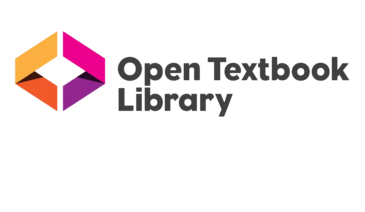
Browse OER Textbooks from the University of Minnesota's Open Textbook Library. These textbooks are authored and peer reviewed by faculty or other accredited subject matter experts. Many of these textbooks are actively used to teach OER based courses at instiutions across the United States.

This text introduces the basic skills and ideas of algebra.

It is essential to lay a solid foundation in mathematics if a student is to be competitive in today's global market. The importance of algebra, in particular, cannot be overstated, as it is the basis of all mathematical modeling used in applications found in all disciplines. Traditionally, the study of algebra is separated into a two parts, elementary algebra and intermediate algebra. This textbook, Elementary Algebra, is the first part, written in a clear and concise manner, making no assumption of prior algebra experience. It carefully guides students from the basics to the more advanced techniques required to be successful in the next course.
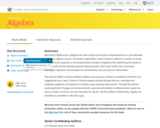
Elementary Algebra is designed to meet the scope and sequence requirements of a one-semester elementary algebra course. The book’s organization makes it easy to adapt to a variety of course syllabi. The text expands on the fundamental concepts of algebra while addressing the needs of students with diverse backgrounds and learning styles. Each topic builds upon previously developed material to demonstrate the cohesiveness and structure of mathematics.
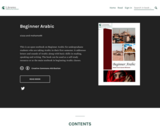
Short Description:
This is an open textbook on Beginner Arabic for undergraduate students who are taking Arabic in their first semester. It addresses letters and sounds of Arabic along with basic skills in reading, speaking and writing. The book can be used as a self-study resource or as the main textbook in beginning Arabic classes.
Long Description:
This open textbook is intended for beginning students of Arabic in their first semester. This OER is unique in its presentation of Arabic language content through theme-based modules. Each theme is addressed through vocabulary, grammar, reading, speaking, and writing components. Each chapter includes self-check embedded quizzes that help learners digest language concepts. The book is also designed with teachers in mind. Each chapter includes pair work and group tasks that the teacher can implement in class and other parts that can be assigned as homework. The focus of the book is to build literacy in Standard Arabic structure in a simplified and sequenced approach while emphasizing speaking skills. By the end of this course, students will be well prepared for building their competence in a sequenced and organized manner in the following parts of this series.
Word Count: 6312
ISBN: 978-1-62610-108-1
(Note: This resource's metadata has been created automatically by reformatting and/or combining the information that the author initially provided as part of a bulk import process.)
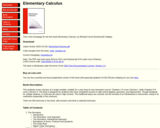
This textbook covers calculus of a single variable, suitable for a year-long (or two-semester) course. Chapters 1-5 cover Calculus I, while Chapters 6-9 cover Calculus II. The book is designed for students who have completed courses in high-school algebra, geometry, and trigonometry. Though designed for college students, it could also be used in high schools. The traditional topics are covered, but the old idea of an infinitesimal is resurrected, owing to its usefulness (especially in the sciences).
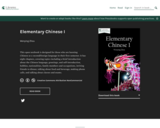
Short Description:
This open textbook is designed for those who are learning Chinese as a second/foreign language in their first semester. It has eight chapters, covering topics including a brief introduction about the Chinese language, greetings, and self-introduction, hobbies, nationalities, family members and occupations, inviting friends to dinner, talking about food and beverage, making phone calls, and talking about classes and exams.
Long Description:
This open textbook is designed for beginners learning Chinese as a second/foreign language. This book aims to introduce learners to standard Chinese pronunciation, character knowledge, basic conversational phrases, grammar and vocabulary use, and cultural knowledge. Throughout the eight chapters, learners will explore: greetings and self-introduction, hobbies, nationalities, family members and occupations, inviting friends to dinner, talking about food and beverage, making phone calls, and talking about classes and exams. Learning activities include audio recordings so students can listen to the pronunciation of vocabulary words and observe dialogue between speakers. The book also includes videos with captions, allowing learners to listen, watch, and read. Original interactive activities have been created by the author to facilitate the practice of target vocabulary and dialogues.
Word Count: 19508
ISBN: 978-1-62610-115-9
(Note: This resource's metadata has been created automatically by reformatting and/or combining the information that the author initially provided as part of a bulk import process.)
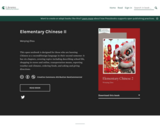
Short Description:
This open textbook is designed for those who are learning Chinese as a second/foreign language in their second semester. It has six chapters, covering topics including describing school life, shopping in stores and online, transportation means, reporting weather and climates, ordering foods, and asking and giving directions.
Long Description:
Elementary Chinese II is aimed at those who have learned Chinese as a second/foreign language for one semester, using the OER textbook “Elementary Chinese I“.
This open textbook contains six main lessons, including topics such as school life, shopping, transportation, weather, eating out, and asking and giving directions. They are organized in a straightforward and well-structured manner that are easy to follow. Within each lesson, there are a set of two dialogues or a set of one dialogue plus one narration. The texts of the dialogues or narrations are created to provide real-life Chinese language to beginning learners. After the texts, vocabulary words are listed for them to study and review. Grammatical points are explained in English and example sentences are provided for students to understand. Each dialogue or narration ends with culture notes where learners can read and better understand the target text.
Word Count: 20224
ISBN: 978-1-62610-116-6
(Note: This resource's metadata has been created automatically by reformatting and/or combining the information that the author initially provided as part of a bulk import process.)
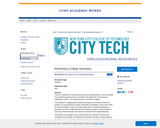
This text is intended for a brief introductory course in plane geometry. It covers the topics from elementary geometry that are most likely to be required for more advanced mathematics courses. The only prerequisite is a semester of algebra.
The emphasis is on applying basic geometric principles to the numerical solution of problems. For this purpose the number of theorems and definitions is kept small. Proofs are short and intuitive, mostly in the style of those found in a typical trigonometry or precalculus text. There is little attempt to teach theorem-proving or formal methods of reasoning. However the topics are ordered so that they may be taught deductively.
The problems are arranged in pairs so that just the odd-numbered or just the even-numbered can be assigned. For assistance, the student may refer to a large number of completely worked-out examples. Most problems are presented in diagram form so that the difficulty of translating words into pictures is avoided. Many problems require the solution of algebraic equations in a geometric context. These are included to reinforce the student's algebraic and numerical skills, A few of the exercises involve the application of geometry to simple practical problems. These serve primarily to convince the student that what he or she is studying is useful. Historical notes are added where appropriate to give the student a greater appreciation of the subject.
This book is suitable for a course of about 45 semester hours. A shorter course may be devised by skipping proofs, avoiding the more complicated problems and omitting less crucial topics.
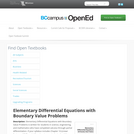
Elementary Differential Equations with Boundary Value Problems is written for students in science, engineering, and mathematics who have completed calculus through partial differentiation. If your syllabus includes Chapter 10 (Linear Systems of Differential Equations), your students should have some preparation in linear algebra. In writing this book I have been guided by the these principles: An elementary text should be written so the student can read it with comprehension without too much pain. I have tried to put myself in the student's place, and have chosen to err on the side of too much detail rather than not enough. An elementary text can't be better than its exercises. This text includes 2041 numbered exercises, many with several parts. They range in difficulty from routine to very challenging. An elementary text should be written in an informal but mathematically accurate way, illustrated by appropriate graphics. I have tried to formulate mathematical concepts succinctly in language that students can understand. I have minimized the number of explicitly stated theorems and defonitions, preferring to deal with concepts in a more conversational way, copiously illustrated by 299 completely worked out examples. Where appropriate, concepts and results are depicted in 188 figures
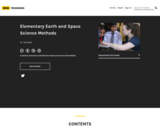
Biology, Chemistry, Physics, Space, and Earth Science
Word Count: 74440
(Note: This resource's metadata has been created automatically as part of a bulk import process by reformatting and/or combining the information that the author initially provided. As a result, there may be errors in formatting.)
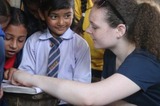
This book is intended for use by future teachers, written from the perspective of students who have taken Science Methods II. The student authors gathered and created resources to help prospective elementary cience teachers better understand science and feel confident in your abilities as a future teacher.
This book is divided into five parts which align with the Science Methods II course:
Physics
Space Science
Earth Science
Climate Science
Course Materials and Pedagogy
Within each part, the material is broken down into smaller chapters. Here you will find written explanations, video links, glossary terms, key takeaways, and practice quizzes to help you understand the material. This book is designed to be a flexible resource; use it as much or as little as you need throughout the course.

The need for this particular grammar arises from the peculiar shape of the MDiv curriculum at Asbury Theological Seminary. Several years ago the faculty adopted a curriculum that required one semester of Greek and one semester of Hebrew, each as preparatory for a basic exegesis course in each discipline.
It became clear after several years of trial and error that a “lexical” or “tools” approach to learning Greek and Hebrew was inadequate, no matter how skilled the instructors or how motivated the students. In today's general vacuum of grammatical training in public education across the United States, students typically enter seminary training with no knowledge of how languages work. Any training we might give them in accessing grammatical information through the use of Bible software programs will, we learned, come to naught in the absence of an understanding of just what such information actually means. We agreed that we actually needed to “teach the language itself,” at least in some rudimentary fashion, if we hoped students would make sense of grammatical and linguistic issues involved biblical interpretation.
The first 12 chapters of this grammar are designed to correspond to the first semester's instructional agenda. In these chapters we introduce all the parts of speech, explain and drill the basic elements of grammar, set forth the larger verb system (excluding the perfect system), teach the tenses of the Indicative Mood only (again, excluding the perfect system), and help students build a vocabulary of all NT words occurring 100 times or more. We also lead students into the NT itself with carefully chosen examples, while at the same time guiding them in each lesson to learn the use of the standard NT lexicon [BDAG] and an exegetical grammar [Wallace's Greek Grammar Beyond the Basics]. We are well aware of the limitations of this approach, but genuinely believe that some instruction along these lines is better than none, and that such an approach provide a foundation for students interested in moving beyond the first semester (into chapters 13-24) into a firmer grasp of the language of the NT.

This open-access textbook helps students learn to read New Testament Greek at the elementary level. It includes clear, concise explanations of grammar and syntax, helpful examples, and essential vocabulary, with no assumption of previous language study, and it does not require accents for most forms. At the end of each of its twenty chapters, students will find short Greek-language episodes from the life of a fictional early Christian family of Jewish ancestry, short readings from the Greek New Testament and Septuagint, and review/homework exercises that can help reinforce new concepts and vocabulary. This book can help students prepare to read Nijay Gupta and Jonah Sandford’s Intermediate Greek Reader: Galatians and Related Texts, also available as an open-access textbook.

Elementary Swahili: Lugha na Utamaduni is intended for both heritage and non-heritage elementary Swahili learners. It introduces the learners to aspects of Standard Swahili language and culture with the view of enhancing their intercultural competence in Swahili. The topics are well-integrated to enable the learners to easily apply what they learn in each topic into their daily interactions in Swahili about themselves, family, friends, immediate world, and East Africa. Thus, at the end of Elementary Swahili, learners should be able to carry out basic conversations in Swahili about themselves, their world, and East Africa. Further, the coursebook will incorporate common Swahili cultural practices in all the topics with the view of enhancing the learners’ intercultural competence.

Este libro trata sobre conceptos elementales junto con scripts cortos de código basado en R Project para hacer análisis inteligente de datos. La relación entre la teoría y la práctica es fundamental en la comprensión de una disciplina, así la aplicación de procedimientos y funciones específicas en tareas elementales es el propósito de este texto. La idea central del texto tiene origen en la asignatura denominada “Análisis Inteligente de Datos”, una cátedra en la que el profesor aporta con elementos fundamentales basados en conceptos y ejercicios prácticos usando R Project. Hoy en día, la disponibilidad de herramientas para la minería de datos es sin duda muy grande. Usuarios con conocimientos básicos pueden aprovechar de utilitarios intuitivos implementados en poderosos entornos de desarrollo. Nosotros hemos querido dar un enfoque al texto hacia una audiencia con mayor relación a la programación y software. Específicamente que constituya una guía básica para estudiantes que inician en el campo de la Inteligencia de datos.

This free and open access textbook introduces new writers to some basic elements of the craft of creative writing in the genres of fiction, poetry, and creative nonfiction. The authors—Rachel Morgan, Jeremy Schraffenberger, and Grant Tracey—are editors of the North American Review, the oldest and one of the most well-regarded literary magazines in the United States. They’ve selected nearly all of the readings and examples (more than 60) from writing that has appeared in NAR pages over the years. Because they had a hand in publishing these pieces originally, their perspective as editors permeates this book. As such, they hope that even seasoned writers might gain insight into the aesthetics of the magazine as they analyze and discuss some reasons this work is so remarkable—and therefore teachable. This project was supported by NAR staff and funded via the UNI Textbook Equity Mini-Grant Program.
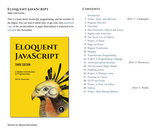
This book contains roughly three parts. The first 11 chapters discussthe JavaScript language itself. The next eight chapters are about webbrowsers and the way JavaScript is used to program them. Finally,two chapters are devoted to Node.js, another environment to programJavaScript in.Throughout the book, there are five project chapters, which describelarger example programs to give you a taste of real programming. Inorder of appearance, we will work through building an artificial life simulation,a programming language, a platform game, a paint program,and a dynamic website.

This is intended as an introduction to embedded controllers for students in Electrical Engineering and Technology at the AAS and/or BS level. It begins with a discussion of the C programming language and then shifts to using the open source Arduino hardware platform. Uses both the Arduino library and more direct coding of the controller.
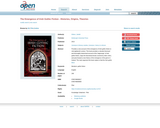
Provides a new account of the emergence of Irish gothic fiction in mid-eighteenth century. This book provides a robustly theorised and thoroughly historicised account of the ‘beginnings’ of Irish gothic fiction, maps the theoretical terrain covered by other critics, and puts forward a new history of the emergence of the genre in Ireland. The main argument the book makes is that the Irish gothic should be read in the context of the split in Irish Anglican public opinion that opened in the 1750s, and seen as a fictional instrument of liberal Anglican opinion in a changing political landscape. By providing a fully historicized account of the beginnings of the genre in Ireland, the book also addresses the theoretical controversies that have bedevilled discussion of the Irish gothic in the 1980s, 1990s and 2000s. The book gives ample space to the critical debate, and rigorously defends a reading of the Irish gothic as an Anglican, Patriot tradition. This reading demonstrates the connections between little-known Irish gothic fictions of the mid-eighteenth century (The Adventures of Miss Sophia Berkley and Longsword), and the Irish gothic tradition more generally, and also the gothic as a genre of global significance. Key Features * Examines gothic texts including Mary Shelley's Frankenstein, Horace Walpole's The Castle of Otranto, Bram Stoker's Dracula, Charles Robert Maturin's Melmoth the Wanderer, (Anon), The Adventures of Miss Sophia Berkley and Thomas Leland's Longsword * Provides a rigorous and robust theory of the Irish Gothic * Reads early Irish gothic fully into the political context of mid-eighteenth century Ireland This title was made Open Access by libraries from around the world through Knowledge Unlatched.
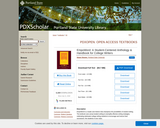
EmpoWord is a reader and rhetoric that champions the possibilities of student writing. The textbook uses actual student writing to exemplify effective writing strategies, celebrating dedicated college writing students to encourage and instruct their successors: the students in your class. Through both creative and traditional activities, readers are encouraged to explore a variety of rhetorical situations to become more critical agents of reading, writing, speaking, and listening in all facets of their lives. Straightforward and readable instruction sections introduce key vocabulary, concepts, and strategies. Three culminating assignments (Descriptive Personal Narrative; Text-Wrestling Analysis; Persuasive Research Essay) give students a chance to show their learning while also practicing rhetorical awareness techniques for future writing situations.